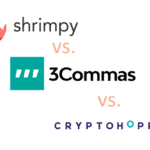Key Takeaways
- Compensation will likely be based on the petition date, meaning that crypto prices from November 2022, rather than their higher current value, will determine payouts.
- Concerns are growing about how the funds will be distributed — whether in crypto or cash.
Creditors of the bankrupt crypto exchange FTX could recover as little as 10-25% of their original funds, according to estimates from creditor activist Sunil Kavuri. These figures, released as the exchange’s restructuring faces legal challenges, come ahead of a crucial October 7 court hearing. Concerns are growing about how the funds will be distributed — whether in cryptocurrency or cash.
One of the central issues facing creditors is that compensation will likely be based on the petition date, meaning that crypto prices from November 2022, rather than their higher current value, will determine payouts. Kavuri highlighted the financial and emotional toll this has had on many investors, some of whom are dealing with panic attacks, divorces, and severe distress over their lost assets.
The estimation is based on the value of assets at the time of FTX’s bankruptcy filing in November 2022. At that point, Bitcoin, for example, was priced around $16,000, far lower than today’s value. Kavuri explained that the petition date value could significantly affect the eventual payouts. “This is a rough estimate of what the petition date payout might look like compared to today’s prices,” he noted.
Kavuri’s concerns are shared by many FTX creditors, who have been waiting since the platform collapsed in November 2022. Frustration has grown as FTX has moved $230 million — about 18% of its total assets — to equity holders. Critics argue that this decision unfairly prioritizes shareholders over customers who lost significant savings when the platform went under.
In response to this, creditors have raised legal objections, arguing that FTX’s reorganization plan disproportionately benefits the platform’s equity holders. Kavuri also called out FTX founder Sam Bankman-Fried, accusing him of violating FTX’s terms of service by using customer funds to pay off debts and buy assets like Robinhood shares. He stated, “The terms of service are unambiguous — the digital assets are owned by the customer.”
Other critics of the restructuring plan include U.S. Trustee Andrew Vara, who argued in an August 2024 filing that the plan grants excessive legal protections to those overseeing the FTX estate. Vara noted that these kinds of protections are not common in similar bankruptcy cases, raising concerns about the fairness of the entire process.
Additionally, the U.S. Securities and Exchange Commission (SEC) has expressed potential opposition to the restructuring if FTX chooses to reimburse clients using stablecoin payments instead of cash or other cryptocurrencies. Earlier this month, the SEC warned FTX that it reserves the right to question the legality of claims paid using money from “crypto asset securities.” It stated that FTX’s plan to pay back creditors does not specify if the provision to make stablecoin payments is approved and who will be distributing the tokens.
Despite these legal challenges, rumours have circulated that FTX could begin distributing up to $16 billion to creditors as early as October. However, this remains unconfirmed and hinges on court approval of the restructuring plan.










